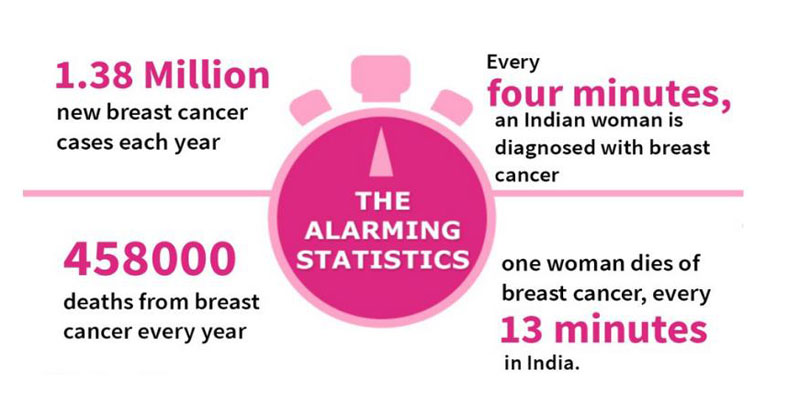Understanding Breast Cancer
Breast cancer occurs when cells in the breast grow uncontrollably, leading to the formation of tumors. It can affect both men and women, but it is significantly more common in women.
Global Statistics
- Prevalence: According to WHO, breast cancer is the most frequently diagnosed cancer globally. In 2020, there were approximately 2.3 million new cases, accounting for about 11.7% of all new cancer cases.
- Mortality: Breast cancer is also a leading cause of cancer-related deaths among women, with 685,000 deaths reported in 2020.
Early Detection
Early detection is crucial in improving survival rates. Here are key points related to this aspect:
- Screening Recommendations:
- The WHO recommends that women aged 50 to 69 years undergo mammography screening every 2 years.
- For women at higher risk (e.g., family history of breast cancer), earlier and more frequent screening may be advised.
- Screening Methods:
- Mammography: This X-ray technique can detect tumors that are too small to be felt. It is the primary method for early detection.
- Clinical Breast Examinations (CBEs): Conducted by healthcare professionals, these exams can identify lumps or abnormalities.
- Breast Self-Examinations (BSE): While BSE alone is not a substitute for professional screenings, it helps women become familiar with their breasts and recognize changes.
- Impact of Screening:
- Studies show that regular mammography can reduce breast cancer mortality by 20-30% in women aged 50-69.
- In countries with organized screening programs, the mortality rate from breast cancer has decreased significantly, demonstrating the effectiveness of early detection initiatives.
Survival Rates
Survival rates for breast cancer vary depending on the stage at diagnosis. The WHO reports the following:
- Localized Stage: When breast cancer is detected early and confined to the breast, the 5-year survival rate is about 98%.
- Regional Stage: If the cancer has spread to nearby lymph nodes, the survival rate is approximately 85%.
- Distant Stage: If the cancer has metastasized to distant organs, the survival rate drops dramatically to around 28%.
Importance of Awareness and Education
- Awareness Campaigns: WHO emphasizes the need for awareness initiatives to educate women about breast cancer risk factors, symptoms, and the importance of regular screenings.
- Symptoms to Watch For: Women should be aware of changes such as lumps, changes in breast shape or size, and any unusual discharge.
Factors Influencing Survival
- Access to Healthcare: Early diagnosis is often linked to the availability and accessibility of healthcare services. Disparities in access can lead to late-stage diagnoses, particularly in low- and middle-income countries.
- Socioeconomic Factors: Women from disadvantaged backgrounds may have lower screening rates, impacting their chances of early detection and successful treatment.
Conclusion
Breast cancer remains a major public health challenge worldwide. Early detection through regular screenings is critical for improving survival rates. The WHO advocates for systematic screening programs, awareness campaigns, and education to empower women to take charge of their breast health. By addressing barriers to access and promoting early detection, we can significantly reduce mortality rates and improve outcomes for those diagnosed with breast cancer.

